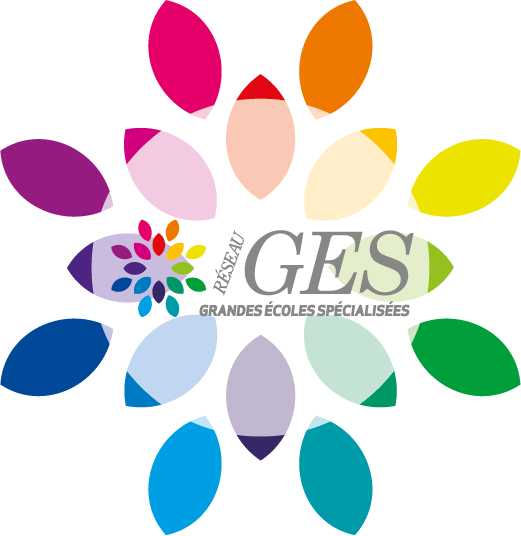
Our selection of books for beginners in Arabic
 Learn now
Learn now
Summary
of the page
>
Books to start learning Arabic
>
Books for reading and writing Arabic
>
Arabic grammar books
>
Bilingual Arabic-French literature
>
French-Arabic dictionary
Il y a plusieurs façons d'aborder l'apprentissage de l’arabe, et parmi les plus efficaces figurent sans doute les livres. Les ouvrages pédagogiques constituent un excellent complément à tout programme d'apprentissage, vous aidant à approfondir des aspects spécifiques tels que la grammaire, le vocabulaire ou la prononciation. Voici notre sélection des meilleurs livres pour learn arabic facilement.
Books to start learning Arabic
Al-bab, starting out in Arabic A1
Al-bab is a method specially designed for beginners and those who already have some knowledge of Arabic. This method guides you through learning spoken and written Arabic, enabling you to at your own pace. Gradually, you will gain the independence to express yourself in Arabic and understand native speakers. The material includes 292 worksheets with written and oral exercises to help you :

Al-bab, starting out in Arabic A1
- Commencer par learning the Arabic alphabet
- Mastering the writing and pronunciation of letters
- Gradually assimilate the essential concepts of Arabic grammar
- Reinforce your grammatical knowledge with practical exercises
- Construct your first sentences and translate them between Arabic and French
- Enrich your vocabulary with over 1,000 common words
- Exploring key elements of Arab culture
- Practise common forms of conversation
You can write directly in the book with a pencil. All the exercises are accompanied by their corrections, and revision sequences are integrated throughout the worksheets. What's more, you can download 39 audio files free of charge from the Editions Ellipses website, which is ideal for perfecting your understanding of spoken Arabic.
The Essentials of Arabic for Dummies
Speak Arabic with ease! With "L'Essentiel de l'arabe pour les Nuls", learn Arabic directly and effectively. Forget long theoretical explanations and dive into practical language learning. This guide gives you the basics of grammar to help you make rapid progress in oral and written expression. The Arabic-speaking world opens its doors to you!

The Essentials of Arabic for Dummies
On the programme:
- Mastery of the Arabic alphabet
- Learning to conjugate present, past and future tenses
- Sentence construction techniques
- Understanding numbers
- Exploring verbal modes
- Use of pronouns and prepositions
Learning Arabic

Learning Arabic
"Apprenons l'arabe" propels you beyond the beginner stage with its innovative method, designed for rapid progress. This approach doesn't leave you to learn on your own. The manual is complemented by a dedicated website (apprenonslarabe.fr),
where you'll find additional resources and videos for literacy lessons. We'd love to hear from you so that we can enrich the site with new files and videos. What's more, QR codes in the book give you access to videos
videos on my YouTube channel. I'm also active on social networks (Facebook and Instagram) to answer your questions.
With "Apprenons l'arabe", you get much more than just a book: it's a complete guide to learning Arabic. The method stands out for its personalized follow-up, making it a unique tool for learning Arabic. The
literacy program is designed in an original way, integrating grammar lessons as you learn the letters, enabling you to quickly reach an intermediate level. The manual's pedagogy is inspired by and simplifies
Al-Ajroumiya" for grammar, adapted from French secondary and higher education textbooks.
Method 90 Arabic - Basic practice: Beginner
Whether you're a beginner or have been learning Arabic for years, this progressive and practical method is for you. It is specially designed to help you get by in everyday situations in Arabic-speaking countries. in Arabic-speaking countries. It also helps you to understand, read and speak modern Arabic.

Method 90 Arabic - Basic practice: Beginner
Each lesson in this manual includes :
- Text with annotations
- Tips for improving your pronunciation
- Key grammar and vocabulary points
- A variety of exercises, with solutions at the end of the book
- A practical glossary and grammatical reminder
This handbook, previously published under the title "L'Arabe d'aujourd'hui", is a complete tool for effectively immersing yourself in the Arabic language.
Books for reading and writing Arabic
Learn To Write Arabic Letters
This writing book is perfectly suited to learning the Arabic alphabet for children and beginners. Ideal for young people and adults wishing to master the writing of Arabic letters, from Alif to Yaa.

Learn To Write Arabic Letters
- Repetition of the tracing and writing of letters facilitates learning
- Each letter is covered on two pages
- At the end of the booklet, a page dedicated to learning Arabic numerals is included.
ARABIC - Learning to read and write for beginners
Learners will gradually gain confidence thanks to the writing aids in the book: indications on stroke order, pre-tracing characters, and greyed-out characters to follow. These elements are designed to guide students step by step, allowing them to practice independently on blank spaces when they feel ready.

ARABIC - Learning to read and write for beginners
Le livre offre :
- 112 pages dedicated to practising calligraphy and pronunciation of the Arabic alphabet, with 4 pages per letter
- Opportunities to practise writing and pronouncing useful everyday words, including animals, fruit and vegetables, and household objects
- 28 colouring-in illustrations for a fun learning experience
- Exercises designed to test your memory and improve your recall capacity
Learn to read and write Arabic : Progressive method
This book is easy to take anywhere. Its unique concept and authentic approach immerse you in the progressive learning of Arabic. You'll start with general information before immersing yourself in the rules of reading and writing.
More than just a manual, this book is an adventure that will captivate you for hours and help you achieve your goals in Arabic.

Learn to read and write Arabic : Progressive method
"Learning to read and write in Arabic:
- Is in black and white
- Uses 90g/m2 paper for optimum quality and ease of use
- Includes 90 pages
- High-quality glossy cover for a pleasant feel
- Is written in French
Arabic grammar books
Arabic grammar

Arabic grammar
This book on grammar presents the fundamental structures of the Arabic language. By exploring the unique logic of its structure, it facilitates understanding of the language and access to Arabic writing. It can be used either as ongoing reading or as a grammar reference, and is the perfect complement to the Sans Peine method, reinforcing your mastery of Arabic.
Arabic - Active grammar

Arabic - Active grammar
This active grammar of modern literal Arabic does more than simply list grammatical difficulties. It tackles the specific challenges faced by French speakers with clear explanations, adapted to all levels - secondary school pupils, students and self-taught adults. Its practical structure encourages independent learning: for each rule presented, there is a corresponding exercise on the right-hand page for immediate application. right-hand page for immediate application. The book includes modern vocabulary and examples of current sentences, which are essential for mastering Arabic. At the end of the book, you will find the answers to the exercises and Arabic indexes, as well as various appendices, make it easier to understand the subtleties of the language.
Arabic in all its states! Arabic Grammar in Tables

Arabic in all its states! Arabic Grammar in Tables
"L’arabe dans tous ses états !" est un manuel concis et innovant, présentant l'essentiel de la
Arabic grammar
littéral à travers 346 entrées thématiques réparties en 35 chapitres. Il offre une vision claire de la structure grammaticale de l'arabe, enrichie d'exemples traduits, et met en lumière les aspects visuels, lexicaux et culturels de la langue.
This book captures the different facets of Arabic, from classical forms to modern expressions, revealing the linguistic evolution from archaism to neologism. Ideal for pupils, students and self-taught learners,
"L'arabe dans tous ses états" provides quick and precise answers to grammatical questions, supported by a detailed table of contents and indexes in French and Arabic.
Bilingual Arabic-French literature
Arab news from the Middle East
Discover original Arabic works such as :
- Naguib MAHFOUZ (1911-2006) - A saint is born - Why fall in love?
- Zakariya TAMIR (1931) - A little sunshine
- Émile HABIBI (1921-1996) - The Mandelbaum Gate
- Edwar Al-KHARRAT (1926-2015) - Abouna Touma
- Hanan El-CHEIKH (1945) - The Persian Carpet
A complete and accurate translation, enriched by a wealth of annotations; An innovative approach to perfecting your language skills through direct immersion in the works of international writers.
Tales in Arabic for everyone : Bilingual anthology

Tales in Arabic for everyone : Bilingual anthology
Tales, part of the universal heritage, are traditionally told in the evening, particularly on long winter evenings. This collection, humorous and wise, includes stories from Djuha, Antar, Kalila and Dimna, and others from oral literature. This bilingual anthology is for everyone, young and old, Arabic and French speakers, offering a unique way to improve your command of French and Arabic. These tales are meant to be shared, offered and disseminated widely.
The fortieth piece

The fortieth piece
In one tale, a prince fell in love with a common woman and married her. He was so passionately in love with her that he gave her an ancient palace he had inherited from his father, and of which he took great pride. On the day he installed her, he revealed to his wife that the palace had forty rooms. She could freely dispose of thirty-nine of them, but the fortieth was forbidden to her.
French-Arabic dictionary
Larousse Arabic pocket dictionary

Larousse Arabic pocket dictionary
With 45,000 words, expressions and translations, this dictionary offers :
- A contemporary, everyday vocabulary
- A clear, legible layout
- Numerous examples to help you identify the correct translation and understand the context of each word
-
A variety of teaching aids:
- Thematic vocabulary and grammar points
- Common expressions for different situations
- Grammar points for French speakers
- Notes on culture and civilisation
Harrap's Mini Visual Dictionary Arabic

Harrap's Mini Visual Dictionary Arabic
A visual mini-dictionary containing 4000 key words and expressions to help you master Arabic. With 2000 images to help you memorise vocabulary. Full transcription of each word and expression. Covers 100 everyday topics. Includes examples to help you form simple, practical sentences.
Your questions
on learning Arabic
Can I learn Arabic on my own?
Which countries speak Arabic?
How can I learn Arabic at home?
How do you say hello in Arabic?
What's the best way to learn Arabic?
What kind of Arabic should I learn?
Language Club
The blog that tells you everything about languages


Language Club
The blog that tells you everything about languages


All languages to learn
Certification preparation courses available

Toeic
They learned a new language with Globe Speaker





Complète et évolutive.

Louis • 65 ans
Niveau A1 à B1 - Abonnement Premium





Ravie et très heureuse d'avoir pu atteindre les objectifs fixés. Une équipe attentive et bienveillante, qui donnent les moyens aux élèves de réussir.

Isabelle • 34 ans
Niveau A2 à B1 - Abonnement Premium





J'ai apprécié de travailler sur la plateforme Globe Speaker, autant de fois que je le voulais ou pouvais, ainsi qu'avec Maria pour la partie coaching.

Véronique • 41 ans
Niveau A2 à B2 - Abonnement Premium CPF





Very good, fun platform.

Marc • 45 ans
Niveau A2 à B1 - Abonnement Premium





Plateforme très pédagogique, et adaptée à tous les âges. J'ai vraiment eu l'impression d'apprendre.

Maria • 28 ans
Niveau A1 à B1 - Abonnement Premium



































